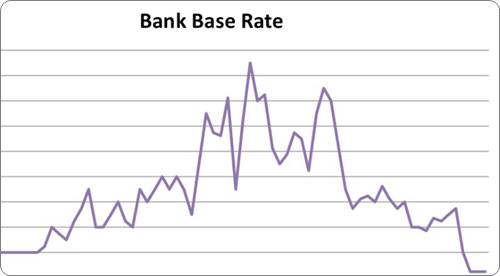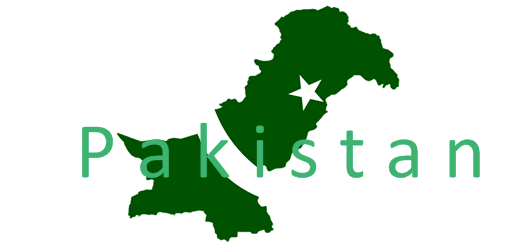Macroeconomics Report: Analysis of Interest Rate in Pakistan
Macroeconomics Report: Analysis of Interest Rate in Pakistan
The interest rate prevailing in the economy is intimately related to the deposits. Positive rate of return on deposits is important pre- requisite for promoting financial savings in the economy besides ensuring healthy banking system. The interest rates should be high enough to compensate the depositors against the inflation rate prevailing in the economy. The government is, however, trying to strike a balance between the inflation rate in the economy and interest rate prevailing in the economy. To support the industrial activity government is taking steps to make cheap capital available to the industry. Several steps have been taken in this respect by the government to reduce the interest rate over the pasts few years. These steps include reduction of the statutory liquidity ratio, the slashing of the discount rate and the removal of excise duty on loans.
In this situation the banks are expected to increase their credit policy by adapting to an aggressive lending policy. Therefore, the expected decline in the earning is likely to be compensated by increased lending and corresponding increase in the interest income of the banks.
Interest Rate 1994-95:
I n Pakistan the rates of return on the PLS deposits (except until recently the deposits under current accounts) are determined by banks depending on their profitability and by applying different weights prescribed by state bank of Pakistan to different types of deposits.
A comparison of the weighted average of rate of return on the interest and PLS based deposits revealed that the overall rate of return increased in case of interest based deposits from the 5.93% in 1994 to 6.91% in December of 1995. However in case of PLS deposits the weighted average rate of return declined from 9.19% at end of December 1994 to 9.07 % at end of December 1995 indicating a negative rate of return of deposits.
Interest Rate 1995-96:
The weighted rate of return on the interest based deposits decreased from 6.91% at end of 1995 to 6.0 % at end of 1996. While the rate of return on the PLS deposits increased from 9.07% at end of 1995 to 9.6% at end of 1996.
Interest Rate 1996 –97:
The weighted rate of return on the interest as well as PLS based deposits increased during this period, However the PLS deposits showed a slightly higher increase as compared to the interest based deposits.
The weighted rate of return on the PLS account rose from 9.6% from December 1996 to 9.9% at end of December 1997. The weighted rate of return on the interest based deposits increased from 6.0% in December 1996 to 6.1% in December of 1997.
Years 1994 1995 1996 1997
Interest based Accounts 5.93 6.91 6 6.1
PLS based deposit
9.19 9.07 9.6 9.9
SAVINGS:
Saving rate is one of the most important things that determine the investment and output in the economy. It is directly correlated with the investment in the economy, the higher the saving rate in the economy the higher would be the investment level in the economy.
Unfortunately Pakistan doesn’t come in the category of such countries which can claim high saving rate. Instead the saving rate in Pakistan is one of the lowest in the region, contributing very little to the national development and growth.
The saving rate in Pakistan has constantly been hovering from 9 to 13% during the last so many years. Pakistani society is consumption orientated and this is one of the reason why the Pakistanis save s o little.
Another big reason why Pakistanis save so small amount of their total income is that the high inflation rate over the years have made people to spend all the money that they make so as so to make the maximum from the current nominal value of money. The inflation in the economy sets in sort of expectations hypothesis mind set of the people and people expect high rate of inflation in future and thus want to spend what they earn as soon as possible. This has been a trend for the last decade, but it can be hoped that the saving rate may increase as an indirect consequence of the decrease in the inflation rate in the economy. The inflation rate in the economy has 0been around 14 to 15 percent but this has come to single digit figure so it can be expected that there can be a positive impact on the saving rate in the future.
1993-94:
The gross nationals saving rate increased in 1993-94 by 31.3% to Rs.239 billion. The share of national savings in the GNP rose to 15.2% in 1993-94. The increase in the national saving was a result of increased saving both on the part of public saving as well as the private saving. The other saving part of public sector registered a 15.1% increase while for the private sector both the household and the corporate sector showed an increase of 28.2% in the savings.
1994-95:
The gross national savings at current market prices grew by 13.0 percent to Rs. 278.2 billion during 1994-95 as compared to an increase of 35.3 percent during the year. The share of national savings in GNP declined from 15.7 percent in 1993-94 to 14.8 percent during 1994-95. There was a disserving in the public sector both because of the dissavings in the general government and also in the others section. Among the public sector household savings increased to Rs. 236 billion during the year 1994-95 as compared to the savings of Rs. 181.7 billion during the year 1993-94.
1995-96:
The gross national savings at current market prices rose by 8.1% to Rs. 298.6 billion during 1995-96. The share of national savings in GNP fell from 14.6% in 1994-95 to 13.6% during 1995-96. The ratio of public saving s to national savings rose from 13.9% in 1994-95 to 18.2% in 1995-96.Within public sector the general government had dissavings, however the other saving of the government showed a increase of around 78.9 percent. The private sector savings rose by around 3.2 percent to Rs.244.4 billion during 1995-96 as compared to an increase of around 15 percent the previous year. Within the private sector the household as well as the corporate sector recorded an equal increase of around 3.2% during the year as compared to previous year when the increase in the savings was 15 percent.
1996-97:
The gross national savings rose by 7.5percent to Rs.320.9 billion. The share of national savings fell from 13.6percent to 11.3percent of the GNP. The public saving registered a still sharp increase to 47.5 percent as compared to an increase of 42 percent the previous year. The private saving increased by 1.8 percent as compared to 3.2 percent the previous year.
1997-98:
The national savings increased at the current price level by 49.5 percent to Rs.401 billion during 1997-98 as compared with the increase of 7.5 percent the previous year. The ratio of national savings to GNP rose to 14.6percent in 1997-98 as compared with an increase of 11.3 percent the previous year and an average of 13.2 percent in the last five years. The public savings declined by 42.1 percent to Rs. 26.7 billion during 1997-98 as compared to an increase of 47.5 percent the previous year. The decrease in the public saving was result of both a decline in general government saving as well as the decrease in other savings. The private savings increased sharply during the same period and registered an increase of 68.4 percent to Rs. 374.7 billion during 1997-98 as compared to an increase of 1.8 percent the last year and an average rise of 8.1 percent during the last five years.
Years 92-93 93-94 94-95 95-96 96-97 97-98
PUBLIC 21054 38881 35441 31282 46138 26735
PRIVATE 160950 207324 234431 218560 222417 374651
TOTAL 182004 246205 269872 249842 268555 401386
GROSS DOMESTIC PRODUCT:
The gross domestic product of a country quantifies the total output of the country in monetary terms. Pakistan’s GDP has been growing at a steady rate over the last decade ranging between 3 percent and 6.5 percent. The effect of this increase in the GDP is nullified on the economy because of the continuous and phenomenal increase in the population of Pakistan. Pakistan’s current population growth rate is 2.6%that is one of the highest in the world. This puts burden on the scarce resources of the country. So the GDP has to grow at a rate that should be able to provide a sustained thrust to the economic and social development of the country.
1993-94:
The GDP grew by 3.8% in 1993-94 and stood at Rs.1, 573 billion as compared to previous years when the GDP grew by 2.9% and stood at Rs.1, 341 billion.
1994-95:
The GDP registered an increase of 4.7% in 1994-95 in real terms as compared to the increase in GDP of 3.8% the previous year. With the population increase of 3% GDP per capita grew by 1.7 percent as compared to 0.9 percent the preceding year. The increase in the GDP can be attributed the increase in consumption by both the public as well as the private sector.
1995-96:
The GDP in real terms increased by 6.1% during 1995-96 compared with 4.4 % in the previous year. The increase in the GDP can be attributed to the growth in the agricultural sector. With the population increasing at the rate of 2.8 percent the real GDP per capita in real terms increased by 3.3%. A sharp decline in the workers remittance resulted in decrease in the net factor from abroad. The increase in the GDP can be attributed to the increased in the consumption both by the government as well as the private sector.
1996-97:
The GDP showed a continued upward trend in the year 1996-97 and registered a GDP of Rs. 2,404 billion as compared to 1995-96 when the GDP stood at Rs. 2,165 billion.
The GDP continued to grow in 1997-98 and reached to Rs. 2,759 billion as compared to 1996-97 when it reached to Rs. 2,404 billion.
YEARS 92-93 93-94 94-95 95-96 96-97 97-98
GDP 1341629 1573097 1882071 2165598 2404633 2759525














